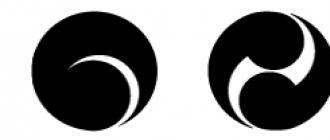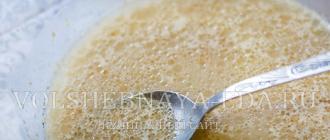The main elements of geothermal heating systems are heat pumps, the main components of which are an evaporator, a condenser, a compressor, a thermostat and a refrigerant circulating through a closed system.
The correct combination of the presented elements into a single system makes it possible to release low-potential heat from the environment (soil, air or water), with its subsequent transformation into high-potential heat, necessary for the operation of heating systems and the provision of hot water.
The operating principle of any heat pump is closely similar to a working refrigerator, with the only difference being that in the refrigerator heat is removed and then displaced onto the radiator, while a heat pump takes heat from the environment and transfers it to the heating system.
This happens as follows:
- The refrigerant is supplied to the evaporator, here evaporation is achieved by sharply reducing the pressure
- During evaporation, the heat of the evaporator walls coming from the environment passes to the refrigerant, then the refrigerant, turning into gas, enters the compressor
- The refrigerant, which is in a gaseous state, is subjected to high pressure after entering the compressor. As a result, the refrigerant is heated to 120-125°C and further moved to the condenser, where heat is transferred to the coolant. After “releasing” the heat, the refrigerant returns to the liquid state, and the cycle repeats until the set temperature is reached
- The operation of the heat pump is controlled by a thermostat, which opens and closes the circuit responsible for starting or stopping the compressor
How Geothermal Heating Works
The essence of geothermal heating is that low-grade heat is taken from the environment, converted into high-grade heat and then supplied to the house.
To ensure the operation of a heat pump, electricity is required, although its costs are 3-4 times lower than the thermal energy received. The efficiency of the heat pump is maximum and surpasses any heating boilers. The effectiveness of its use is also obvious, manifested in significant savings in money.
However, it is necessary to take into account that the cost of installing a geothermal heating system is very high, and payback occurs no earlier than after 15-20 years of operation.
Heat pumps can be classified into several types, the main of which is the type of source that “gives off” low-grade heat. According to this criterion, heat pumps can be divided into:
- Ground;
- Air;
- Water;
- Combined.
The most efficient and stable are heat pumps whose circuit is located in the ground. However, this significantly increases the cost of carrying out work, the implementation of which is impossible without the use of special equipment.
Air-to-air
The essence of the operation of heat pumps operating from an air source is similar to the operation of geothermal pumps. The only difference is that the heat source is not the soil, but the air. Such pumps can be divided into two types of systems - air-water and air-air.
The type of system is determined by the medium used to distribute heat in the building - water or air. The main advantage of “air” heat pumps, in comparison with geothermal ones, is their much lower cost.
This is due to the absence of the need for complex installation work to install an underground circuit.
A heat pump that operates on an air-to-air system is designed only to heat indoor air. Heat is extracted from the air outside by means of an evaporator unit mounted on the wall of the building.

Next, the heat is transferred to a condenser, which is placed indoors. Here the heat is transferred to the internal air, which, after heating, is returned back to the room. If it is necessary to heat large areas, various air flow distribution systems are used.
Air-to-air heat pumps are for heating purposes only. The advantages include high performance and heat transfer levels.
The main disadvantage is significant fluctuations in performance depending on the temperature of the external air masses. In this regard, geothermal heat pumps are much more stable, since the ground temperature at the location where the circuit is installed is practically constant.
Despite their variable performance, air-to-air heat pumps are very popular due to their environmental and performance characteristics.
Water-water
The design of water-to-water heat pumps is closely similar to geothermal pumps. The only difference is that the source is not soil, but water (natural and artificial reservoirs, groundwater and waste water).
The high average annual efficiency is explained by the high coolant temperature in winter. By arranging the heat exchanger in the form of a spiral, the installation area can be significantly reduced. Like any heating equipment, water-to-water heat pumps have their own advantages and disadvantages.

Negatives:
- High cost of a heat pump;
- Impossibility of effective use at a significant distance from the heat source;
- Specific requirements for the capabilities of the supply source.
The listed disadvantages are completely covered by the following advantages:
- Minimum area for installation of the circuit;
- There is no need to use special equipment;
- High level of efficiency;
- Possibility of organizing not only heating, but also hot water supply and passive cooling;
- Uninterrupted operation;
- Long service life;
- Easy maintenance;
- Minimum electricity consumption in terms of performance.
Air-water
According to the principle of operation, an air-to-water heat pump is similar to the operation of a household air conditioner, with the only difference being that as a result of their operation, it is not the air that is cooled, but the coolant (most often it is water).

Air-to-water heat pumps, unlike air-to-air system pumps, are capable of organizing not only heating, but also hot water supply.
Their only drawback is that high performance is only possible when the temperature does not drop below -15°C. Therefore, stable operation of air-to-air, air-to-water heat pumps and their high performance are achievable only in appropriate climatic conditions.
The use of renewable energy sources (geothermal, solar, air) for space heating allows saving up to 50% of energy costs. To implement this idea, internal heat energy is installed in private homes.
Good solution for heating your homeThis type of heat pump is inferior in efficiency to geothermal and solar collectors, but is less demanding on installation conditions; the external heat exchanger is installed in an open area next to the house or on the roof. The heat output of the devices is not enough to cover 100% of the heat demand during severe frosts, but they significantly reduce heating costs during the off-season period. The best option is to use a heat pump in combination with traditional heaters.
What is the basis for the operation of an air-to-water inverter heat pump with a controller: operating principle, diagram, installation, device
The operating principle is based on the release of thermal energy from the refrigerant circulating inside the pipes when it transforms into a liquid state in the condenser. This is the same Carnot cycle, on the principle of which refrigeration units operate, but the external source of energy is air, and the internal source is water in the heating system. Air enters the evaporator and heats the circulating refrigerant. The coil is usually made of copper and can withstand high pressures. After heating, the liquid begins to evaporate, the vapor enters the condenser and releases heat when compressed. Then the cycle repeats, the warmer the outside air, the more efficient the work. The air-to-water heat pump is chosen by the majority of residents of our country.
It is logical that at sub-zero air temperatures, the efficiency of heat transfer decreases. For this reason, heat pumps are installed in combination with, for example, electric heating elements. The diagram for connecting equipment to the heating system with this alternative includes:
- Air source heat pump.
- Tank for hot water.
- Two heating elements: to compensate for the missing thermal power and to heat water.
- Heating circuit circulation pumps (separate for radiators)
- Mixer.
In a similar way, the heat pump is connected to heating systems with gas, liquid and solid fuel boilers. Practice shows that maximum efficiency is achieved when connecting to heated floors rather than radiator systems.
Technology is constantly developing and improving. According to their design, the models are divided into split and monoblock. In the first case, the external heat exchanger has a powerful fan for air intake and is located in an open area near the house. The capacitor can be in an external or internal unit; the first option is valued for its noiselessness; the connection to the home heating system is carried out through heat pipes. A monoblock connects a fan and a capacitor in a single housing; this design is noisier. Some models are connected not only to heating systems, but also to ventilation systems or use the heat of exhaust air indoors. Choosing a heat pump with a reverse mode option allows it to be used for cooling rooms in the summer (but this design is more common with air-to-air pumps).
Advantages and disadvantages of home heating, according to owner reviews: Nibe model, Mitsubishi, Danheat, Daikin, Chinese and Russian manufacturers
Clear advantages include increased efficiency of the heating system due to free renewable energy. An air-water pump is cheaper than a geothermal pump or one operating on the water-to-water principle and, in comparison, is almost silent. For some models, heat-conducting tubes require insulation, but there are no particular difficulties when laying a small insulated area. Regardless of the type of pump, it is dependent on the electrical connection. But this is not considered a disadvantage, because for every 1 kW of electricity consumed, the heat pump produces at least 3 kW of thermal and, importantly, environmentally friendly energy. There are no combustion products, there is no need for chimneys.
Heat transfer comes from free renewable energyThe disadvantages of heat pumps are felt in winter. Despite manufacturers' statements about year-round efficiency, it is better to turn off air heat pumps at air temperatures below -7°C. Efficiency inevitably drops at sub-zero temperatures; only an industrial heat pump (with the ability to heat water up to 90 °C) functions without problems in winter. But even these models are not recommended for use at -25 °C.
Power calculation: the price of the pump depends on many factors
Approximately for 100 m2 you will need a pump with a heating capacity of 5 kW, for 300 m2 from 21. The cost of a heat pump directly depends on its thermal power; in this case, a reserve is not provided (it simply will not pay off). To determine the exact value of heating output, it is recommended to calculate the power of the heat pump, taking into account not only the heated volume, but also the climatic characteristics of the region and the degree of thermal insulation of the building. There are programs with the selection of the required coil area; such information is important when making equipment yourself.
Operating rules for a hot water pool: do the maintenance yourself
Heat pumps are completely autonomous and do not require special placement conditions, but, like any heating equipment, they require annual maintenance. To prevent problems, it is recommended:
- Carry out periodic monitoring of the oil temperature in the compressor.
- Inspect and clean filters.
- Remove debris from the external heat exchanger and dirt from temperature sensors.
- Check the tightness of the entire system, paying special attention to the connections.
- Install a surge protector and check the condition of the electrical wiring.
Operation is not recommended when deviating from the permissible external temperature range. This performance characteristic depends on the heat pump model and must be specified in the instructions. On average, this is -25 °C when operating in heating mode and +40 °C when reverse cooling is turned on.
WATCH THE VIDEO
An important factor is the temperature of the oil in the compressor. Starting a heat pump with cold oil is possible, but when turned on in this way, the equipment quickly breaks down. It is recommended to use the oil heating system in the compressor: just turn it on first and wait for 3-4 hours. If all requirements are met, the compressor will last a long time (European manufacturers provide a guarantee of up to 50 years). The air-to-water heat pump is widely used by owners of private country houses.
Many people who have built a country house or dacha are faced with a completely reasonable question: what can they use to heat their home? What heating option will be most optimal if the building is located far from communications?
In this case, use will be the most effective way to heat a country cottage or country house.
- this is a special type of heating equipment that collects dissipated heat from the environment and accumulates it into thermal energy to heat a living space.
In this article we will talk about all the features of the air-to-water heat pump, as well as the important points of installing this heating system for a country house.
Operating principle
Placement of air-water system units
The heat pump design consists of two blocks:- external;
- interior.
The external block has the following structural elements:
- heat exchanger;
- fan;
- compressor.
The indoor unit consists of the following components:
- heat pump control system;
- circulation pump;
- heat exchanger
The operating principle of a heat pump consists of the following important points:
Thus, we can conclude that the operation of an air-to-water heat pump is the transformation and subsequent transfer of thermal energy from the environment to the heating system of a residential premises.
Pros and cons
 A heating system with a heat pump has a number of positive advantages, which are expressed in the following important points:
A heating system with a heat pump has a number of positive advantages, which are expressed in the following important points:
- the generation of thermal energy does not require the use of different types of fuel;
- the use of a heat pump allows you to effectively heat a living space;
- the service life is more than 25 years, which indicates the reliability of using this type of heating equipment;
- The environmental friendliness of the heat pump lies in the fact that there are absolutely no emissions into the surrounding atmosphere;
- in the warm season, it is possible to use this device as an air conditioner;
- ease of control of the heat pump;
- Can be used in combination with other renewable energy devices.
Air-to-water heat pumps have one significant drawback - their rather high price, which does not allow this type of heating to become widespread.
Therefore, it is very important to plan ahead to calculate the efficiency of using a heating system with a heat pump.
Installation features
 Since a heating system with an air-to-water heat pump is a fairly complex technical device, its installation is best entrusted to highly qualified specialists.
Since a heating system with an air-to-water heat pump is a fairly complex technical device, its installation is best entrusted to highly qualified specialists.
If you decide to equip the system with your own hands, then you must first of all correctly calculate the time for installing heating with a heat pump.
The stages of each type of installation work can be:
- preparatory work will approximately last 1–2 weeks;
- installation of an outdoor heat pump unit – 3–7 days;
- equipment of the indoor unit and installation of the heating system – 1–2 weeks;
- launch and debugging of work – 2–3 days.
It is also worth remembering that when installing a heat pump, you should know the installation features, which include the following points:

Expert advice: When installing heating equipment with an air-to-water heat pump, the most optimal heating option will be underfloor heating.
We have reviewed all the features and characteristics of an air-to-water heat pump. Based on the foregoing, we can safely say: such a heating system is an economical and effective means of heating, which will soon gain sufficient attention.
Watch the video, which shows in detail the operating principle of the air-to-water heat pump, as well as reviews from the owner and specialists:
An autonomous heat pump is one of the modern technologies for heating a home. In Russia, this type of heating is still far from widespread use, but is increasingly gaining popularity due to its advantages over traditional energy sources. Many people still perceive the principle of operation and efficiency of the unit with distrust, as something fantastic. Nevertheless, the pump has earned positive characteristics from specialists and real users, owners of apartments and country cottages. One of the types of thermal installations - “air-water” - is a good solution specifically for residents of high-rise buildings. The article will tell you about the operating features of such a unit and consumer reviews.
How does an air-to-water heat pump work?
The heat pump is another step in technology towards energy efficiency. A heating system built on its use is capable of converting low-potential energy from the outside world (air, water) into high-potential thermal energy to heat the house. The principle of operation of refrigerators is taken as a basis, but in reverse. The thermal installation does not generate heat, but transports it from outside to the room.
Attention! 1 kW of electrical energy, which the unit spends on rotating the compressor shaft, at the output (in the condenser) produces approximately 3.5 - 5.0 kW of heat for heating the house.
The air-to-water installation operates as follows:

Advice. Experts advise installing heat pumps of any type in a heating system equipped with non-classical radiators. Those that do not require high-temperature heating of the coolant are better suited: air heating, heated floors, large-area radiators, etc. There should be at least 65% of such devices in the system.
Pros and cons of an air-to-water heat pump
An air-heating unit uses the cheapest energy. Along with high efficiency, it also attracts buyers with the following advantages:
- Saves electricity. Installations usually have energy efficiency class A, A+ or A++ certificates (EU standards).
- Works quietly.
- Easy to program. Can be controlled autonomously.
- Unlike the “earth-water” and “” systems, installation of the primary circuit does not require drilling wells, laying pipes, etc. A fan is enough, the installation of which is simpler and much cheaper.
- Available for installation at a height of several floors in urban areas. For earthen and water “colleagues” you need a piece of land or a body of water. Accordingly, there is no need for additional documentary permits from regulatory authorities.
- Suitable for modification and integration with a ventilation system. Thus, it will help improve air exchange in the room.

Heat pump operation
Of course, such a heating system also has disadvantages:
- The colder it is, the lower the efficiency. At temperatures below -7°C, the efficiency of a domestic air heat pump, according to the laws of physics, will be very low. A very powerful industrial one, used to heat offices, social institutions, etc., can withstand down to -25°C.
- Network dependency. The device will not work if the power supply is interrupted.
Tips for purchasing and installing a heat pump heating system
Based on the disadvantages of a heat pump, it is ideal for regions with moderate winters and is ineffective in cool and northern climate zones. But do not be upset if in winter in your area there are cold temperatures below -7C. In this situation, there are the following solutions:
- Inclusion in the heating system, which will accumulate the resulting heat. One tank (small, apartment size) with the source turned off can evenly distribute heat throughout the system for up to a day. This is a convenient option for areas where severe frosts usually do not last long.
- Installation of an auxiliary heat source: gas or electric boiler. When a cheap heat pump cannot work, a less economical “backup” will replace it.
- Combination of the two previous techniques.
Attention! As with any heating system, before installation it is important to carefully check the heat loss of your home and, if possible, insulate it. The warmer the house, the less power you will need the device.
Reviews from real heat pump owners
People have many conflicting opinions about air-to-water heat pump technology. Many of them are related to the imperfections of the first generation models:
- noisy work;
- unsuitability as the main source of heat;
- inability to fully compensate for heat loss in the home.

Heat pump outdoor unit
Modern models completely refute these judgments. The air intake is provided by a large fan, which must be covered with a grille. Its location and design solution for the facade of the building must be thought out in advance. It is important that the air path to the pump is as simple as possible.
Often, an air-water pump is used as an alternative to traditional coolants: gas, electricity and solid fuel. Moreover, the system fits well and effectively serves even large country houses, not to mention city apartments. Owners of the devices claim that with a correct assessment of the required power, you can use a heat pump to cool the room in the summer and even heat water for domestic needs. But buyers are confused by the high cost of equipment and its installation.
There is an opinion that with the current price level for the device and, for comparison, for gas, it is profitable to use “blue fuel”. At least for housing up to 150 square meters. m. An air heat pump in such conditions will pay for itself for a very long time. In addition, once every 8-12 years the device will require major repairs. Therefore, consumers are advised to use a heat pump either in a large house, or when independence from energy resources is important to you.
Heating a house using an air source heat pump: video






